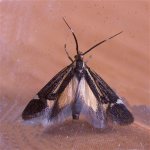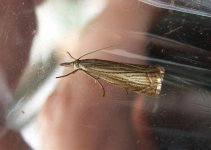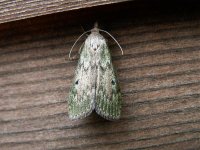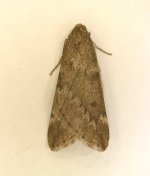Surreybirder
Ken Noble
There are so many requests for micro IDs - and so many of them keep coming up - that I wondered whether it might be a good idea to have a micro ID thread.
My idea is that all who would like to should post pictures of some of the commoner, easier micros that most moth'ers will catch. If it works, all who want to should be able gradually to learn some of the commoner species - and hopefully be better equipped to know when something less common or harder to ID comes along.
I don't, personally, have masses of great micro photos but I thought I'd start with ones that I have that are reasonably common at this time of the year.
After discussion with robinm from the mods we have agreed that in order to keep this thread as clear as possible any posts that are not photos of micros with an id will be removed or moved. If you disagree with any ids please post here but any such posts will be removed once the id has been agreed.
If anyone else thinks this is a good idea, please post your pix!
Ken
Agapeta hamana
Aphomia sociella
Archips xylosteana
Aleimma loeflingiana
do. (ligher exampel)
My idea is that all who would like to should post pictures of some of the commoner, easier micros that most moth'ers will catch. If it works, all who want to should be able gradually to learn some of the commoner species - and hopefully be better equipped to know when something less common or harder to ID comes along.
I don't, personally, have masses of great micro photos but I thought I'd start with ones that I have that are reasonably common at this time of the year.
After discussion with robinm from the mods we have agreed that in order to keep this thread as clear as possible any posts that are not photos of micros with an id will be removed or moved. If you disagree with any ids please post here but any such posts will be removed once the id has been agreed.
If anyone else thinks this is a good idea, please post your pix!
Ken
Agapeta hamana
Aphomia sociella
Archips xylosteana
Aleimma loeflingiana
do. (ligher exampel)
Attachments
Last edited by a moderator:
































































